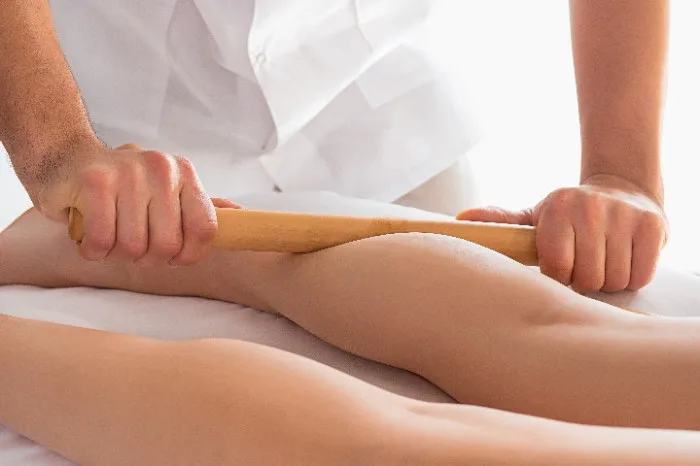Feeling sore after a massage is more common than you might think. Whether it’s your first massage or you’re a regular, post-massage soreness can leave you wondering how to alleviate the discomfort. In this guide, I’ll share effective strategies to help you recover swiftly and enhance your overall massage experience.
Why Do I Feel Sore After a Massage?
It’s natural to experience some soreness after a massage, especially if you opted for a deep tissue massage. During a massage session, pressure is applied to your muscles to release tension and knots. This process can lead to mild inflammation, resulting in muscle soreness after a massage. Understanding this reaction can help you better prepare and manage any discomfort.

Is It Good to Be Really Sore After a Massage?
Experiencing soreness after a massage can be a sign that your muscles are responding positively to the treatment. It indicates that the massage therapy has effectively targeted areas of tightness and chronic pain. However, the soreness should be mild and manageable. If you find the discomfort severe or prolonged, it’s essential to communicate with your massage therapist to adjust the pressure or techniques used.
How Do You Recover from a Deep Tissue Massage?
Recovering from a deep tissue massage involves a few simple steps. First, stay hydrated to help flush out any toxins released during the massage. Applying cold therapy or an ice pack to the sore areas can reduce inflammation. Gentle stretching and light movement can also promote blood flow and alleviate muscle soreness. Additionally, consider taking a warm bath with Epsom salt to soothe your muscles and enhance relaxation.
Can a Massage Therapist Feel Knots?
Yes, a skilled massage therapist can identify and feel knots in your muscles. These knots, also known as trigger points, are areas of muscle tightness that can cause pain and discomfort. During a massage session, the therapist uses their hands to locate these knots and applies targeted pressure to release them. Understanding this can help you appreciate the expertise your therapist brings to each session.
How Do You Get Rid of Soreness After a Deep Tissue Massage?
To effectively get rid of soreness after a deep tissue massage, follow these tips:
- Hydrate: Drink plenty of water to help your body recover.
- Apply Ice: Use an ice pack on sore areas for 15-20 minutes.
- Gentle Stretching: Engage in light stretching to maintain flexibility.
- Rest: Allow your muscles to rest and recover naturally.
- Heat Therapy: After the initial inflammation has subsided, apply heat to relax muscles further.
These methods can help minimize post-massage soreness and enhance your overall recovery process.
Is It Best to Rest After Deep Tissue Massage?
Resting after a deep tissue massage is beneficial, especially if you experience significant soreness. Giving your body time to recover can prevent additional strain on your muscles. However, complete inactivity isn’t necessary. Light activities like walking or gentle stretching can promote circulation and aid in reducing muscle soreness after a massage.
How Often Should You Get a Massage?
The frequency of massages depends on your individual needs and health goals. For those dealing with chronic pain or intense muscle soreness, regular sessions every 2-4 weeks can be beneficial. If you’re using massage for pain relief or to maintain general wellness, monthly massages may suffice. Always consult with your massage therapist to determine the best schedule for your specific situation. To understand how often should you get a massage, visit our guide.
What Are the Different Types of Massage?
There are various types of massage, each catering to different needs:
- Swedish Massage: Focuses on relaxation and gentle muscle soreness relief.
- Deep Tissue Massage: Targets deeper layers of muscle and connective tissue for chronic pain and knot relief.
- Sports Massage: Designed for athletes to prevent and treat injuries, enhancing performance.
- Remedial Massage: Addresses specific health issues and tight muscles.
- Acupressure Massage: Integrates acupressure techniques to balance energy flow and promote healing.
Understanding the different types can help you choose the right massage for your wellness goals. Explore more on acupressure to enhance your massage experience.
How to Communicate with Your Massage Therapist About Soreness
Effective communication with your massage therapist is crucial, especially if you experience soreness after a massage. Before the session, discuss your comfort level and any areas of concern. During the massage, don’t hesitate to express if the pressure is too intense or if you need adjustments. After the session, provide feedback on your soreness and discuss any further steps to enhance your recovery. Clear dialogue ensures a comfortable and effective massage tailored to your needs.
Tips to Prevent Post-Massage Soreness
Preventing post-massage soreness can make your experience more enjoyable. Here are some tips:
- Stay Hydrated: Drink water before and after your massage.
- Avoid Intense Activities: Refrain from strenuous exercise immediately after.
- Warm Up: Gentle stretching before the massage can prepare your muscles.
- Use Proper Techniques: Ensure your therapist uses appropriate methods for your body type.
- Listen to Your Body: Pay attention to how you feel during and after the session, and adjust accordingly.
- Incorporate Acupressure Mats: Utilizing tools like an acupressure mat can enhance relaxation and reduce soreness.
Implementing these strategies can help reduce the likelihood of experiencing significant soreness after your massage.
When to Seek Help for Excessive Soreness After Massage
While mild soreness is normal, excessive discomfort may indicate an underlying issue. If you experience severe pain, prolonged soreness, or any unusual symptoms after a massage, it’s essential to seek medical advice. Persistent inflammation and soreness in areas can signal muscle injury or other health concerns that require professional attention. Don’t hesitate to consult a healthcare provider if you’re unsure about your symptoms.
Incorporating Acupressure and Reflexology for Enhanced Recovery
Integrating acupressure and reflexology into your post-massage routine can further aid in relieving soreness. Techniques like Boosting Lymphatic Flow with Acupressure Mat use targeted pressure points to reduce inflammation and promote healing. Similarly, reflexology focuses on specific points on the feet to enhance overall well-being and support muscle recovery. Additionally, practices like moxibustion can complement your massage therapy by improving circulation and alleviating pain.
For those managing conditions like ADHD, an Acupressure Mat for ADHD can be a valuable tool in maintaining focus and reducing stress. Techniques such as standing on an acupressure mat can also provide continuous relief and support your holistic wellness journey. Exploring holistic nutrition alongside these practices can further enhance your body’s ability to recover and maintain balance.
Conclusion
Experiencing soreness after a massage is a common response to muscle manipulation and tension release. By understanding the causes and implementing effective recovery strategies, you can enhance your massage experience and achieve better results. Remember to stay hydrated, communicate openly with your massage therapist, and consider integrating complementary practices like acupressure and reflexology for optimal well-being.
Key Takeaways
- Soreness after a massage is a normal response, especially after a deep tissue massage.
- Effective recovery includes hydration, cold therapy, gentle stretching, and rest.
- Communicate with your massage therapist to tailor the session to your comfort level.
- Preventive measures like staying hydrated and avoiding intense activities can minimize soreness.
- Incorporating acupressure and reflexology can enhance muscle recovery and overall wellness.
Explore more on holistic wellness and discover how acupressure, reflexology, and other alternative therapies can transform your health journey on AcupressureGuide.com.

